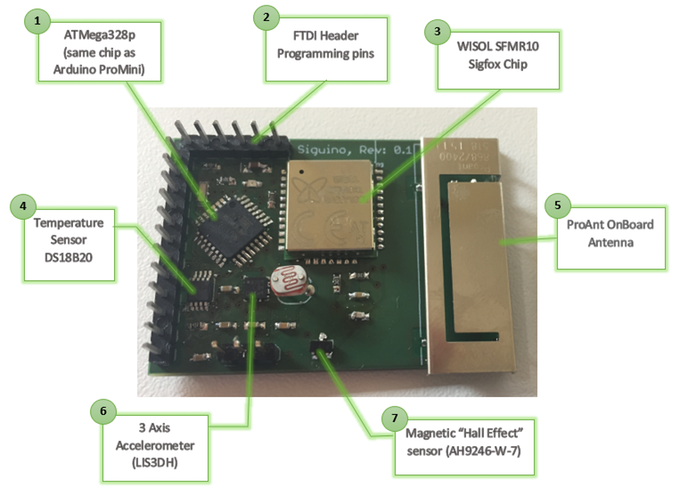- makeITcircular 2024 content launched – Part of Maker Faire Rome 2024Posted 1 month ago
- Application For Maker Faire Rome 2024: Deadline June 20thPosted 3 months ago
- Building a 3D Digital Clock with ArduinoPosted 8 months ago
- Creating a controller for Minecraft with realistic body movements using ArduinoPosted 8 months ago
- Snowflake with ArduinoPosted 9 months ago
- Holographic Christmas TreePosted 9 months ago
- Segstick: Build Your Own Self-Balancing Vehicle in Just 2 Days with ArduinoPosted 9 months ago
- ZSWatch: An Open-Source Smartwatch Project Based on the Zephyr Operating SystemPosted 10 months ago
- What is IoT and which devices to usePosted 10 months ago
- Maker Faire Rome Unveils Thrilling “Padel Smash Future” Pavilion for Sports EnthusiastsPosted 11 months ago
SIGUINO – The Arduino Designed for IoT

Creating a new IoT device from idea to prototype to final product is not as easy as it can be made out to be. Scott Tattersall has created the Siguino to make it easier for anyone else to get started. He hopes by having the main components they had to breadboard together (Arduino, SigFox chip, Antenna, Battery holder, 4 useful sensors, etc) all on one board it will accelerate the product development of others.
Siguino is a single programmable board for makers / developers based on an Arduino that would send basic sensor information via the SigFox network to the cloud for further processing.
It is based on an Arduino Pro mini but designed specifically to be low power (to run on batteries only).
With Siguino you can easily connect your IoT device with many other Services (Alexa, Gmail, Philips Hue, Nest, etc) via IFTTT. When a message comes in to the Siguino Servers from your device, the board forwards it on to IFTTT, allowing you to use easy recipes for functionality.
“The Siguino was designed to help accelerate IoT product development, from our own experiences in trying to take something from concept to finished product. We’ve used many open source building blocks, both software and hardware, and of course the Siguino is also released as open source. The hardware (Schematic & Board) files are all built with Eagle, and the software has all be been built using the Arduino IDE. The hardware and software are available on GitHub.”
Siguino uses an Atmega328p, other components include:
Temperature: Atmel AT30TS750A
Light level: Standard Photocell
Accelerometer: LIS3DH
Hall effect (Magnetic): AH9246
2 Customisable Digital pins
2 Analog pins
Powered by a 3V CR2 battery
ProAnt OnBoard antenna 868Mhz
More information are available on Siguino’s Kickstarter page.
















